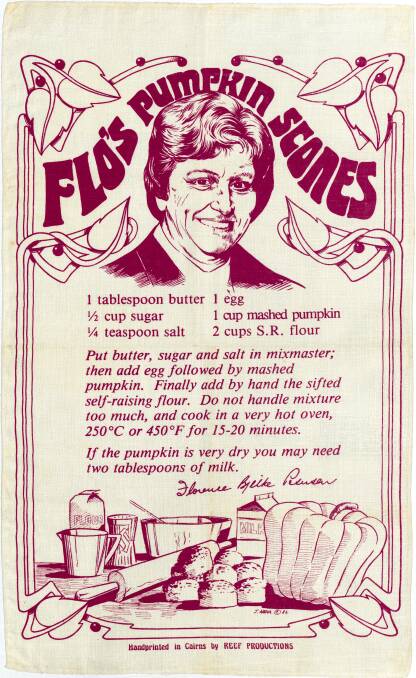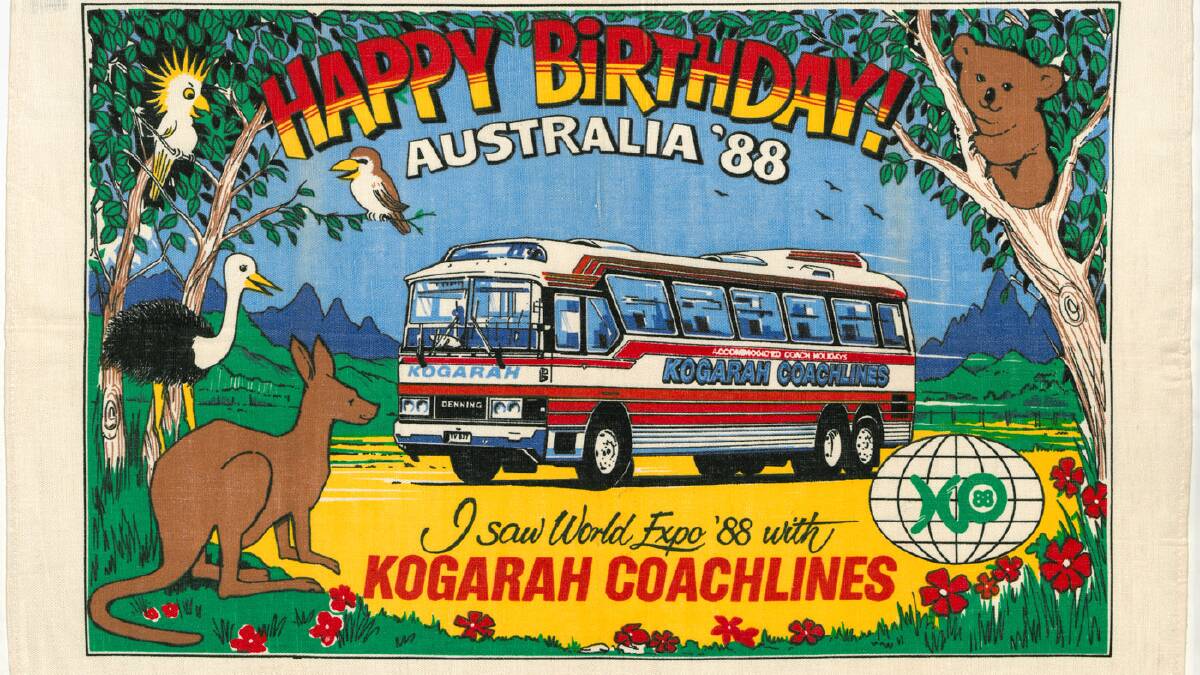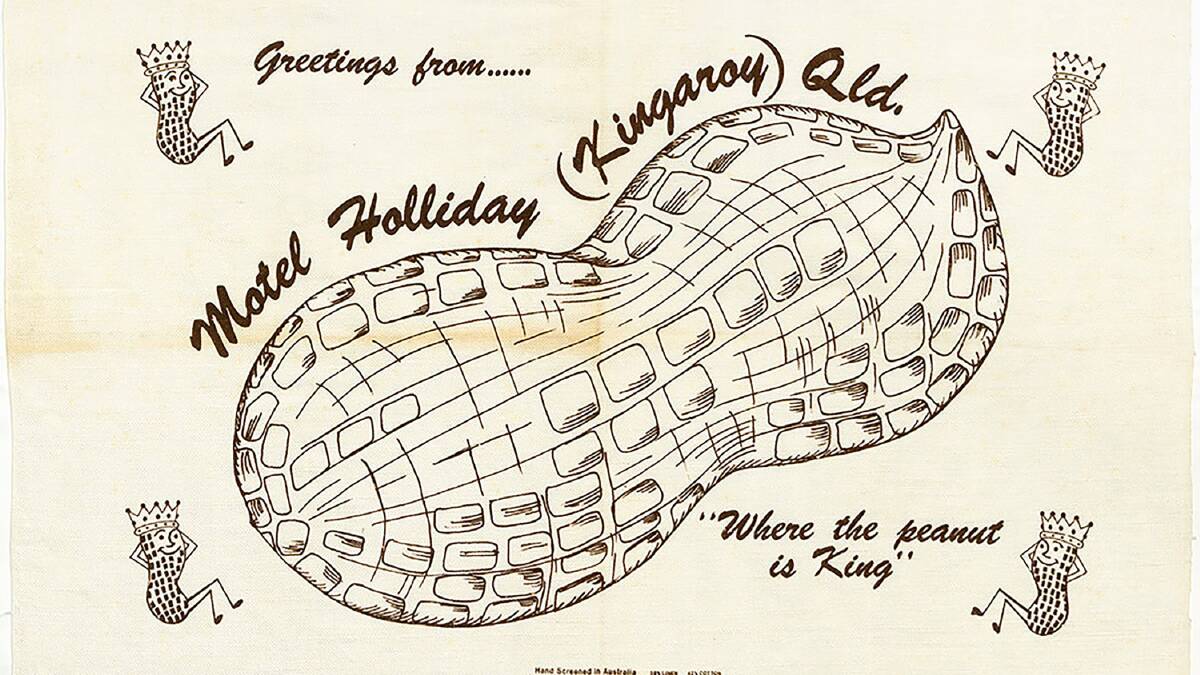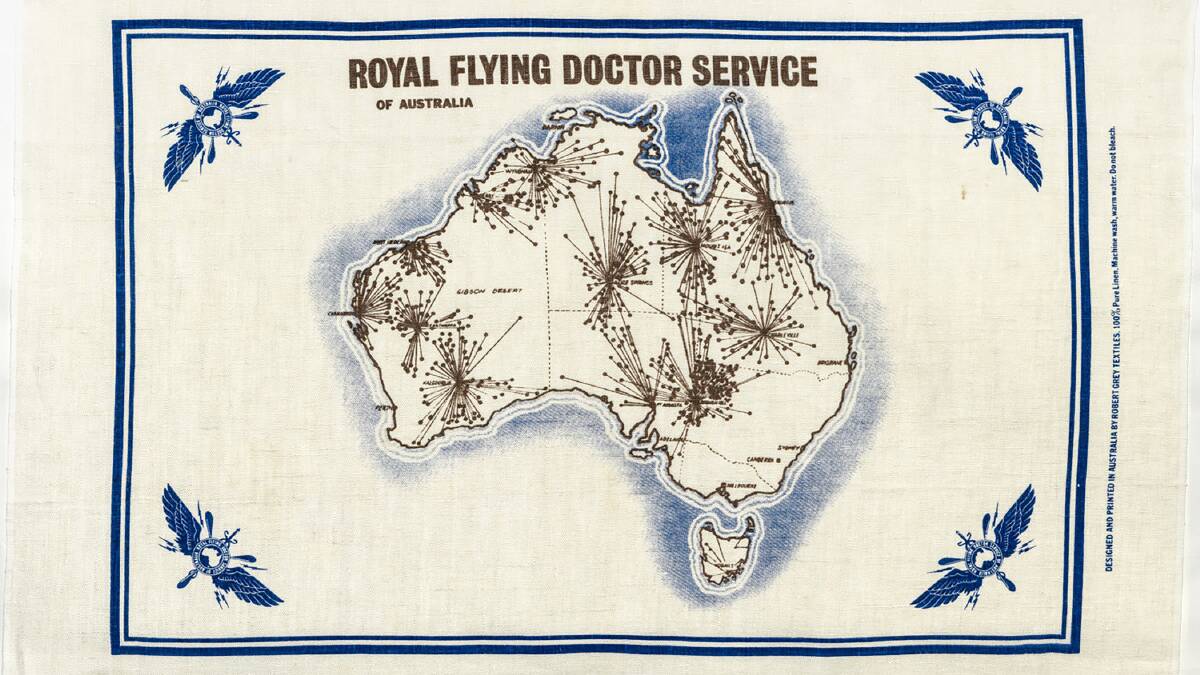
We all have tea towels in our kitchen drawer reminding us of the places we travelled to on holidays but Glenn Cooke's remarkable collection of 1500 souvenir textiles probably trumps any pile we have stashed.
Believed to be the only one of its kind in the world, they have been collected by Mr Cooke, a social historian and curator, since the 1950s and tell much of Queensland's history on their linen.
He said his interest was first piqued by a tea towel with Brisbane's Story Bridge on it.
"Everyone knows the Sydney Harbour Bridge but it took a while for the Story Bridge to become established as the primary icon of Brisbane, thanks to Expo and the City Cats," he said.
"It prompted me to look closer at what tea towels tell us about Queensland.
"It's the most distinctive state because it's a tropical state - we have sugar cane, pineapples, and poincianas, that say summer in Queensland, like nothing else.
"And Australia and New Zealand have taken on tea towels with a passion not found anywhere else in the world."

Mr Cooke, who grew up in Blackall where his father was a shearer, said he had searched the great cultural institutions of the world and found that, at most, they had only a handful of tea towels, and none had such a comprehensive focus.
The collection has examples from Birdsville to Thursday Island, and 200 of them make up a Queensland to a T exhibition that goes on display at State Library of Queensland from August 6.

Arts Minister Leeanne Enoch said the exhibition was set to bring back memories for many visitors, featuring tea towels that were part of advertising promotions, souvenir tea towels showing maps and historic locations, and others that depict local flora and wildlife.
"Some tea towels even feature unique works by First Nations artists from Queensland, such as Thancoupie's stunning Peetheree, the willy wagtail and the beautiful crocodile design created by Cairns-based artist Jenuarrie, both printed by Reef Productions."
Mr Cooke said his favourite was the one of a girl in a bikini that showed when people stopped referring to the north coast and south coast, and Gold and Sunshine Coast became the terminology.
"It changed in 1959, the Queensland centenary," he said. "It's a really transitional work."
And unlike probably 95 per cent of the tea towels in the collection, it's signed with the designer's name.
Mr Cooke found a lot of his tea towels on eBay, in op shops and antique markets, and said he probably paid an average of $20 for each of them.
"Sometimes I get gazumped online," he said, highlighting that it's a hobby shared by many.

Many of the tea towels were originally made of Irish linen by well-known textile mills such as the family-owned Samuel Lamont & Sons Ltd in Antrim.
In the 1960s and 1970s Dennis Lamont travelled around Queensland by rail to persuade local businesses to buy their product as a promotional tool.
When he returned to Northern Ireland, Lamont's designers would create their interpretations of the Sunshine State and ship them to Australia.
Exhibition curator Jacinta Sutton said that at a time when commercial airline travel was taking off, these tea towels helped sell a certain idea of Queensland attractions, particularly the Great Barrier Reef and the Gold Coast, to domestic and overseas tourists.
According to State Librarian and CEO Vicki McDonald AM, tea towels were the ultimate holiday souvenir and keenly avoided by children at washing-up time.
"For the State Library the humble tea towel helps us uncover Queensland's unique history in fun and fascinating ways."
Mr Cooke is a former research curator, Queensland Heritage, at the Queensland Art Gallery where he retired after 32 years, being appointed the first Curator of Decorative Arts in 1981, and is still collecting tea towels.
"I'll stop when I get to 2000," he said. "That's about 350 to go."
IN OTHER NEWS:


